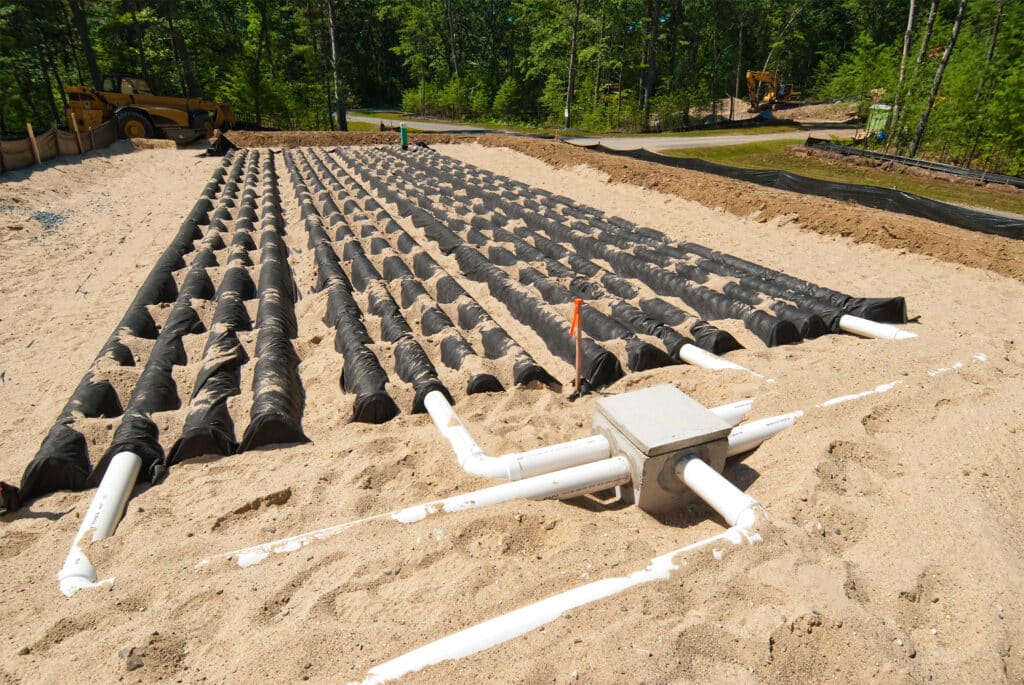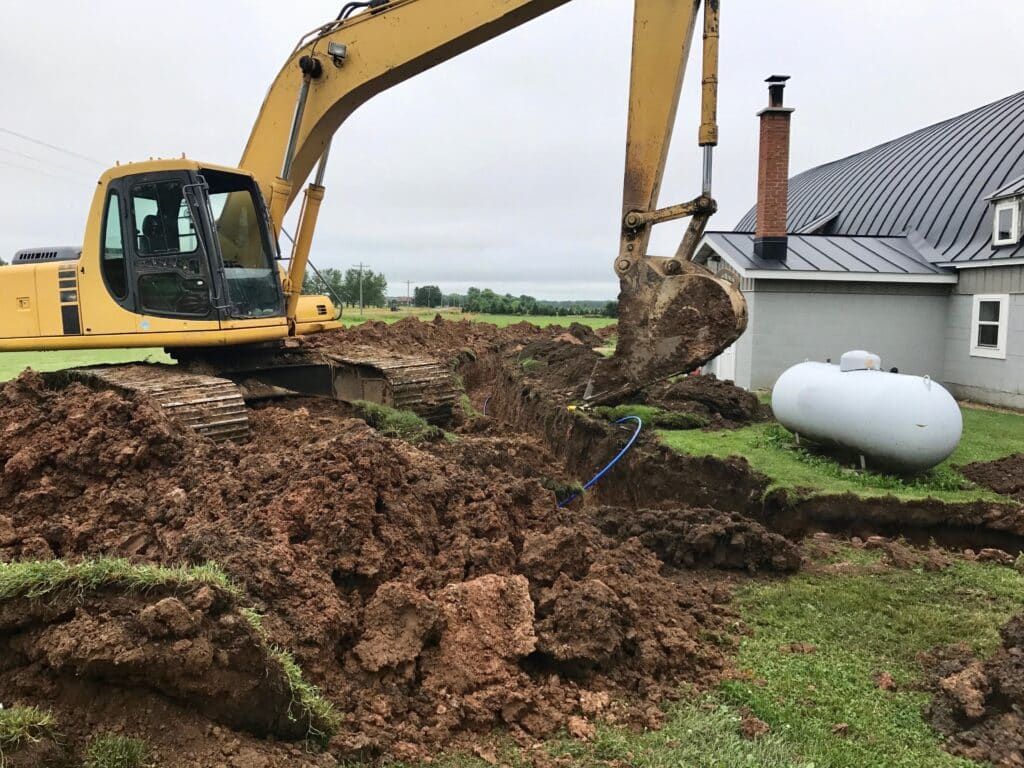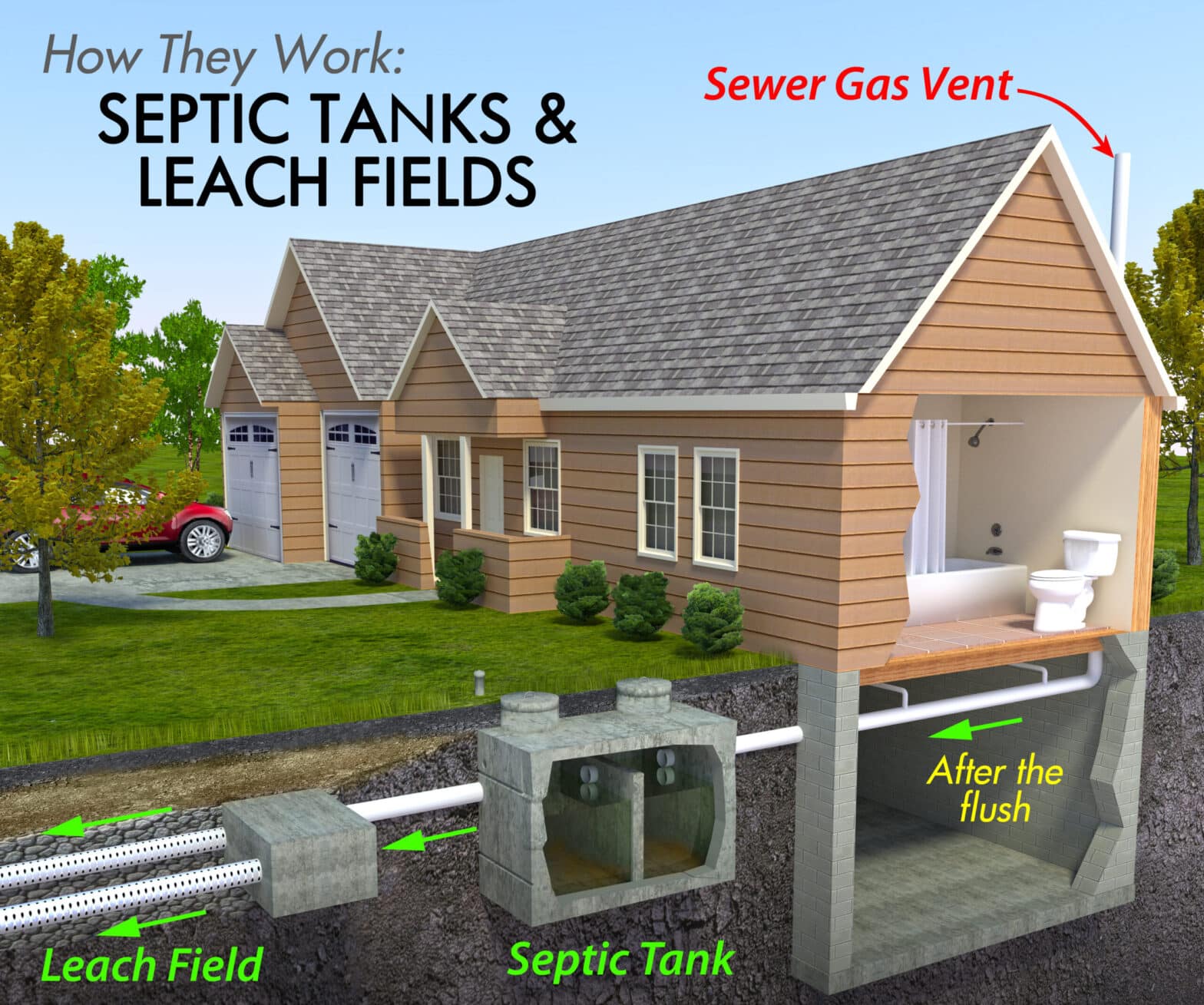How Septic Systems Work
You may have wondered how the septic system works in your Spokane county home. Fortunately, we’re here to tell you all about it, and cover the septic system installation, septic system maintenance and septic system repair.
The Basics of a Septic System
Most of don’t give much thought to our sewer or septic systems until we need sewer repair or septic repair services because something goes wrong. However, these mighty workhorses of the home take on a hefty load and keep on working year after year. Much of this is due to the design innovation that happened over the last hundred years.
The Invention and Evolution of the Modern Septic System
To understand how a modern septic system works you need to understand how these systems evolved to what they are today. In the mid-19th century septic systems were made of wood and concrete and mostly built on site. In fact, the first “modern” septic tank dates to France around 1860 when Jean-Louis Mouras built a clay and concrete septic system constructed in his garden. Upon seeing the results over a 10-year period, he this this could change the world. In 1881 he enlisted the help of Jesuit scientist and mathematician, Abbé François-Napoléon-Marie Moigno (now that’s a mouthful) and the rest is history. By 1884, just 3 year later, the septic tank was common in America. Not much changed in the world of septic tanks for many years. By the 1940’s in many of Washington state’s rural septic tanks were built of precast metal and called “dickey tanks”. It wasn’t until the mid to late 1970s when layers of composites, fiberglass and concrete were commonly used to make precast tanks. This was also the time when multiple compartments in septic systems began being produced. Beginning in the 1980s through the mid 90’s Washington state passed regulations clearly outlining standards for protecting ground water from septic tank waste systems. Many technologies such as mound systems, multistage wastewater systems, drip fields, sand filters and pressurized anerobic tanks became more common during this period.
How do Septic Tanks Work?
So enough with the smelly old history of the septic tank, let’s get down to business- how do septic systems work? Septic systems work by integrating several key parts. We’ll briefly cover these and show in the diagram how these parts work together.
Exit Pipe or Septic Line
This is the line that carries sewage from your toilets into your septic tank. Typically, this also carries wastewater from showers, sinks and bathtubs as well. Although the waste at this stage is sometimes referred to as effluent, it is technically sewage until it has been treated. The sewage or septic pipe feeds into the inlet of the first compartment of the septic tank.
Septic Tank Compartments
The first compartment of the septic tank allows the waste to separate solids sink to the bottom and form sludge, while lighter materials like fats float to the top to form a foam called scum. A baffle separates this section from the second compartment of the septic tank.
A lot of the work of septic systems happens in this part of the system, the take contains a myriad of bacterium and enzymes that help break down the raw sewage. Some of these bacteria, called nitrifying bacterium, can break down nitrogen. This is important in areas where nitrogen discharge into the environment is a top concern. From here it travels to the pump tank or distribution box.

The Drain Field
From the second compartment the liquid which is now effluent is called through a drainpipe into a leach field or drain field. There are many variations that can be used at this point depending on several factors, including your soils, ground water, environment, and regulations in your area. The most common kind of drainage is gravel or stone trench system. (See image). Another type of similar system is chamber system, this does away with the gravel and uses a series of connected chamber filled with soil. This kind of system is sometimes called a brown filter. Yet another type of drain field is a drip distribution which utilizes many small pipes over a large area that drip the effluent into the soil slowly. This kind of systems require an air vent relief valve and are fed by a large pump tank, adding extra expense and maintenance. Other kinds of drain fields include sand filter, mound filters, and constructed wetlands.



Septic System Installation and Repair
As you can see there are options in septic system designs and variables in costs. This is all helpful when you’re installing a new septic system in your Spokane area home or business. It’s also great to have knowledge of how your septic system works, so when something goes wrong, you know where to start. At Columbia General Contractors we know septic systems in the inland northwest, our expert septic system installation and septic system repair team is here to help with all your septic needs- Just give us a call today to schedule your free septic system installation or repair quote!



Hi, this is a comment.
To get started with moderating, editing, and deleting comments, please visit the Comments screen in the dashboard.
Commenter avatars come from Gravatar.